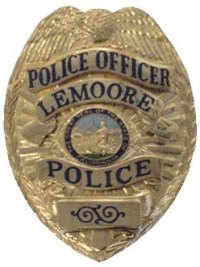Taking a closer look at the causes of juvenile crime in Lemoore

Furthermore, the average age of juveniles I have contacted and arrested is 16. During my investigations, I've spoken with the parents or guardians of these kids. While investigating these incidents, I've asked them why they believe their child engages in such behavior. Some responded by stating that they did not know, and, it was simply an outburst or cry for attention. Others, however, responded by stating that it may be caused by the child's peers or influences.
These parents have expressed to me that it is an everyday battle with the changing behavior(s) of their child. Although these parents only speculated why they believed their child behaved in such ways, it provides a possible hypothesis to why these behaviors occur. Therefore, the purpose of this article is to inform you about a specific theory that may be correlated to reasons why juveniles engage in devious behaviors.
The theory most common with the explanation given by the parents is The Differential Association Theory. This theory was developed by American Sociologist, Edwin Sutherland in 1924. Sutherland's research was conducted at the University of Chicago where he studied various crime patterns. Sutherland's research emphasizes on the centralized fact that crime is committed by human behavior, as determined by social and physical environmental factors, rather than genetic or personal characteristics.
Therefore, the Differential Association Theory is established as a general theory of criminality which is learned in interaction with others in a process of communication. In other words, crime is a learned behavior. Sutherland discovered that when an individual interacts with other deviant individuals, this individual then learns the motives, techniques, values and attitudes for criminal behavior.
Sutherland established the concept that the principal part of the learning of criminal behavior occurs within intimate personal groups. For instance, if an individual associates with only deviant individuals more often than what he or she associates with non-deviant individuals; then there is a greater chance that the individual will learn the behaviors and actions of the deviant individuals. Sutherland noted that frequency and intensity of interaction are important role playing factors in association with deviant individuals. Hence, the amount of time that an individual is exposed to a particular group creates a greater propensity and motivation to commit crime(s). Overall, this theory summarizes that depending on who an individual associates with; there is a chance that behaviors may influence each other to commit crimes.
Having this theory in mind, the Lemoore Police Department is beginning to see an escalation of criminal activity within the juvenile population. Lemoore Police Officers are being dispatched to more disturbances and calls-for-service involving different types of juveniles. Of these reported calls, many of the juveniles are suspected as possible gang members.
It is a concern for the Lemoore Police Department that juveniles engage in devious and criminal activity, specifically gang activity because it endorses the idea that criminal behavior is consistently being learned and promoted within the juvenile population. Also, the juvenile population is considering these acts of criminal activity as a way to establish a certain reputation or status throughout the city and within the juvenile population. This is a reason why Lemoore is beginning to see an increase in gang activity within the juvenile population. Keeping this in mind, our common street gangs are not the only groups who engage in criminal activity. Other cliques, also formed by juveniles, can potentially be motivated to commit crimes. Thus, continuing the concept that criminal behavior is learned within certain groups.
The theory of Differential Association should serve as a fundamental resource for parents, yet also the Lemoore community, to help understand the associations created by juveniles. It is also a way to understand the everyday changing behavior(s) of teens. It is also a theory that can help encourage parents to somehow get involved in their child's life. It does no harm for a parent to build rapport with their child and understand what goes on in their life. Creating stronger lines of communication will only strengthen the bond, yet also serve as a possible deterrent for juvenile delinquency. Awareness of a juvenile's demeanor, sudden change in behavior, clothing, language used, and their peers, will help as key components of understanding the everyday lifestyle of the juvenile.
Anyone having further information or questions regarding juvenile delinquency is encouraged to contact the Lemoore Police Department. Anyone having questions regarding this article is also encouraged to contact me at (559) 925-6808.
Blog 2
- Local NAS Lemoore aviator picked to join the Navy's Blue Angels' team
- Gallery: Lemoore High School graduates bid a fond farewell to their Alma Mater
- Local law enforcement agencies pay their respects at Peace Officers' Memorial
- Gallery: NAS Lemoore families and friends welcome home sailors on Sunday
- Pair of NAS Lemoore squadrons return home after 8-month deployment in Mediterranean
- Local Lions Clubs help celebrate Easter in Lemoore and Armona
_0.jpg)

.jpg)



